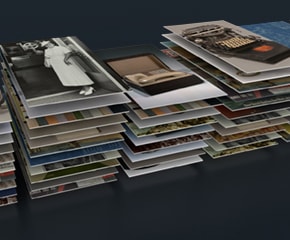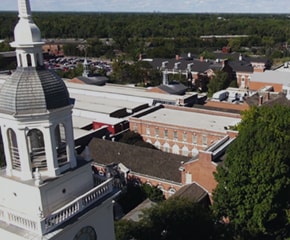
Behind the Scenes at
Edison at Work



Thomas Edison's Laboratory in 1880 in Menlo Park, New Jersey, and in 1984, Reconstructed in Greenfield Village
 Details
Details
Thomas Edison's Laboratory in 1880 in Menlo Park, New Jersey, and in 1984, Reconstructed in Greenfield Village
Artifact
Photographic print
Date Made
1954
Keywords
United States, New Jersey, Edison, Menlo Park
United States, Michigan, Dearborn
Edison, Thomas A. (Thomas Alva), 1847-1931
Object ID
P.A.2545
Credit
From the Collections of The Henry Ford.
Location
By Request in the Benson Ford Research Center
Related Objects
Get more details in Digital Collections at:
Thomas Edison's Laboratory in 1880 in Menlo Park, New Jersey, and in 1984, Reconstructed in Greenfield Village
What is The Henry Ford?
The national attraction for discovering your ingenuity while exploring America’s spirit of innovation. There is always much to see and do at The Henry Ford.
The story behind the Edison at Work district in Greenfield Village is much like that of Edison himself—one where struggle is met with overwhelming perseverance. When Henry Ford decided to bring Edison’s historic Menlo Park laboratory to Greenfield Village, he faced a daunting task. In fact, he would have to salvage the remains of the estate—after Edison moved his operations to a larger facility in West Orange, New Jersey, in 1887, several of the buildings were destroyed by fire, leaving only shadows of their history.
The Recreation Begins
Sarah Jordan Boarding House
Artifact
Boardinghouse
Date Made
circa 1870
Summary
The Menlo Park complex was an all-male environment; the closest workaday involvement of women -- not forgetting that Edison and several of his personnel were married -- was at the Sarah Jordan boardinghouse. Offering room and board for unmarried employees at the complex, it was operated by Sarah Jordan, a distant relative of Edison's. The house also played host to the experimental lighting system installed throughout Menlo Park in December 1879.
Place of Creation
Object ID
28.1004.1
Credit
From the Collections of The Henry Ford.
Get more details in Digital Collections at:
Sarah Jordan Boarding House
What is The Henry Ford?
The national attraction for discovering your ingenuity while exploring America’s spirit of innovation. There is always much to see and do at The Henry Ford.
In 1928, to honor the life and work of his close friend Thomas Edison, Henry Ford began constructing a replica of the Menlo Park laboratory in Greenfield Village. Because there wasn’t much left of the original structure, Ford had to rely on the memory of now-elderly Edison and his associates to recreate the laboratory. Additionally, Ford hired Charles Carman to locate any surviving material that had belonged to the original laboratory to be used in the reconstruction. Ford moved the only two surviving buildings, the Glass House and Sarah Jordan’s Boarding House, to Greenfield Village.
Controversy
When examining records of the reconstruction, you may be surprised to find contradictory evidence on whether or not the replica is truly built to scale. As Henry Ford wrote, “We have throughout this work run down every detail with Mr. Edison and his associates and I believe that the reproduction is exact.”
However, Ford’s use of the word “exact” is, well, not quite exact. When asked if the reconstruction is perfectly identical to the original, Marc Greuther, Chief Curator at The Henry Ford, responded, “No, it isn’t--things are very outsized here.” Standing inside the laboratory, he pointed to a lamp. “[This] would be as big as a dynamo--six feet tall. It never got to that scale with Edison. So, no, this is a diagrammatic expression that scales up certain things for legibility, if you will.”
However, as Greuther noted, Ford did in fact pay very close attention to detail, explaining that he even had “New Jersey soil transported to Dearborn and spread over the building’s new site.”
So then why did Ford neglect to build the recreation to perfect scale? Did he stretch the truth to preserve his dear friend’s legacy?
Ford implied he took great care in ensuring that the laboratory looked as it had in 1886 before Edison moved—even if that meant sacrificing accuracy for clarity. He wrote, “I want the imaginations of those who see history thus concretely presented to start with the thing itself and not to be wasted trying to supply missing parts of the scene.”
From this quote we see that Ford’s intentions were to preserve the order of the laboratory, to ensure that every beaker and test tube is as it would have been in Edison’s time. He aimed for the reproduction to serve as an educational and inspirational tool, even if he had to oversize some objects for greater transparency.
Greuther confirmed that the organization—the orientation of the various buildings—was crucial to Ford. “It was,” he explained, “oriented in a similar manner to the original structures in New Jersey and incorporated as much original material as could be found in the late 1920s.” Ford intended the laboratory and other structures to serve as an homage to the great American innovator that will inspire future generations. In Greuther’s words, “The installation continues to affirm Ford’s faith in the power of places that could, as he put it, ‘teach more than books can teach.’”






